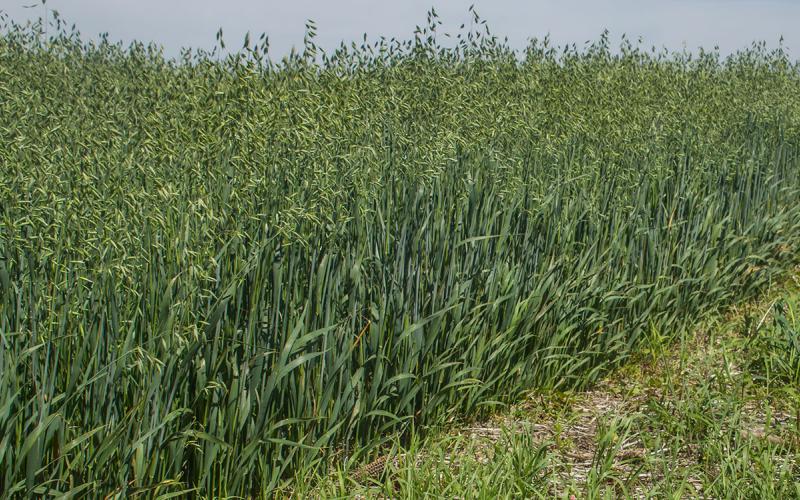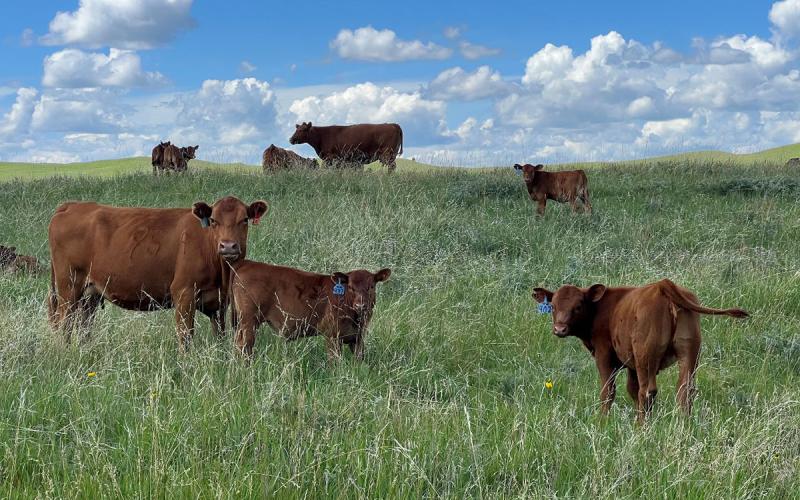Grazing season is around the corner and preparation before turning out is key. There are many factors that make up the system that allows your operation to function, including the soil, and rangeland and livestock health. Understanding the role of each is critical to improving the function of your system. This article focuses on the intersection between soil health and grazing.
Create Protection Through Soil Armor and a Living Shield
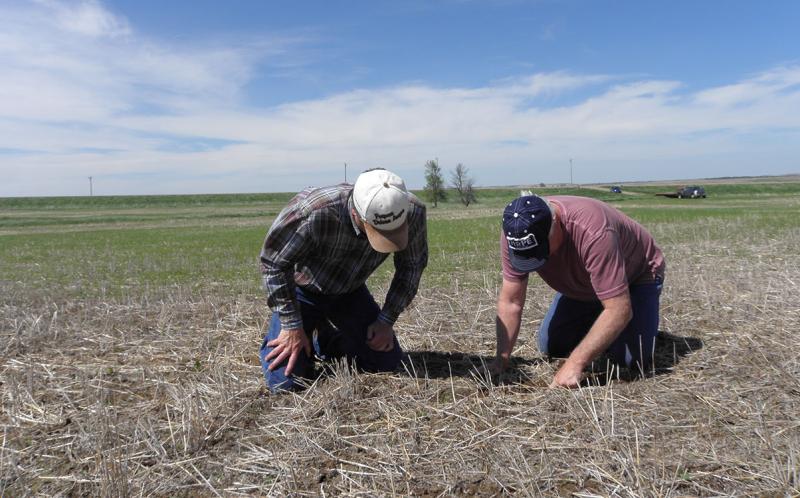
The five principles of soil health include: 1) keep the soil covered, 2) minimize soil disturbance, 3) maximize plant richness (the number of species present), 4) keep living roots present, and 5) integrate livestock. Keeping the soil covered means that, after a grazing event, there is enough soil armor (also described by some as “litter” or “dead” plant material) that covers the soil to reduce erosion and to provide an insulating layer to the soil microbes. Armor is extremely important, because it not only protects the soil, but it also feeds the soil. This occurs when nutrients and organic matter decompose and break down into the soil profile. A “living shield” is also critically important and refers to leaving enough standing plant material behind after a grazing event. The living shield provides several benefits to the system. First, it helps to shade the soil from extreme temperatures, which reduces evaporation. Second, green leaf material intercepts rain drops, which prevents them from aggressively hitting bare soil and causing erosion. Standing plant material will also slow wind coming across the surface, which reduces drying and wind erosion. Lastly, plants are unable to perform photosynthesis, recover from grazing, and produce additional biomass if there is no green-leaf material behind.
Minimize Soil Disturbance
Minimizing soil disturbance matters, because tillage and heavy chemical inputs can disrupt soil structure and, more importantly, microbial life. There is a vast “herd” of soil microbes beneath our feet that are responsible for the exchange of nutrients and oxygen in and out of the soil. Soil microbes help break down organic material (made up of carbon), and integrate it into the soil, effectively storing carbon and reducing climate risks. Soil disturbance can also take the form of cattle impact on the land. There is a fine line between using cattle hoof impact to help break up sod grasses, such as crested wheatgrass, versus leaving cattle on a pasture for too long and leaving no living shield left behind. This scenario can cause soil compaction, which reduces pore space, and therefore limits water infiltration, gas exchange, and root growth.
Maximize Plant Richness
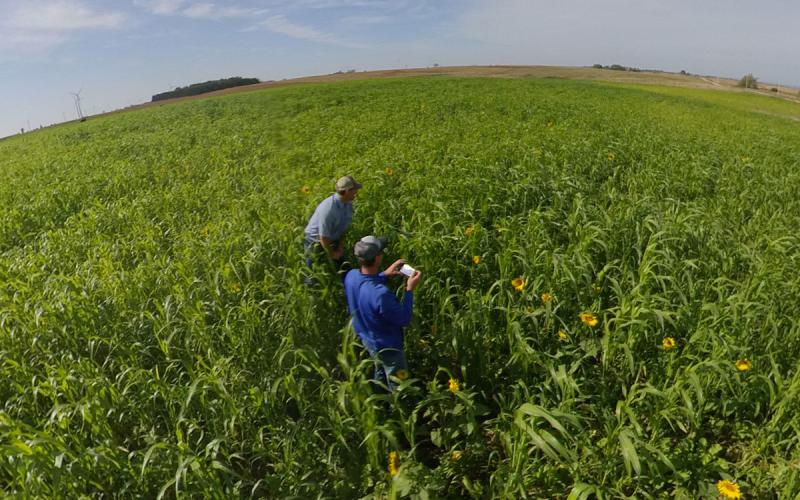
Maximizing plant richness is critical to both soil and rangeland health. High plant richness – or a high number of species present in your pastures – helps support different soil microbes. It also helps to eliminate pest and/or disease pressure. In contrast, a monoculture of one species can be wiped out by a rust or smut. In a pasture with a good balance of different plant types and species, only some species will be affected, reducing the damage done to the plant community. Richness can be increased through multi-species cover crops, planting or reseeding native plants, and using methods, such as rotational grazing. When cattle are not rotated through a pasture and instead are season-long grazed, they will selectively eat the grasses and forbs that are most nutritious and palatable. This results in some species being “grazed out,” which can allow less-desirable plants, like Canada thistle and cheatgrass, to invade. Rotational grazing helps eliminate cattle selectively grazing for certain species and instead applies even pressure to all species in the pasture, helping to maintain the richness of the plant community.
Keep Living Roots Present
Maintaining living roots in the soil has multiplicative impacts on the plant community. Living roots feed soil microbes – and soil microbes feed the roots, providing nutrients, such as phosphorus and zinc to the plant. Additionally, if there are no living roots in the soil, there is nothing to hold the soil in place. An excellent example of this is the Dust Bowl of the “Dirty ‘30s.” There was so much tillage taking place in the Great Plains, that millions of tons of topsoil (and nutrients) were lost as it was blown away. The rangeland grasses that we have in the Great Plains and South Dakota have tremendous root systems that anchor the soil in place. For producers that farm and raise cattle, an avenue to explore is planting cover crops. They not only help increase plant community richness, but they also provide a living root in your system and help extend the grazing season.
Integrate Livestock
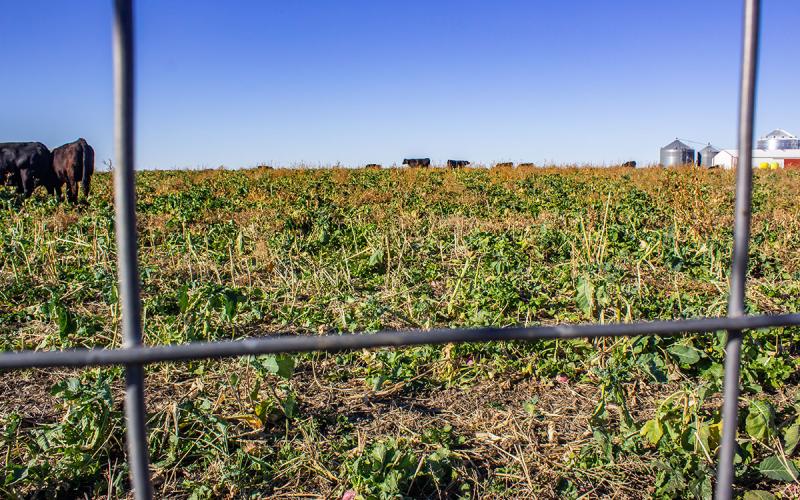
Lastly, integrating livestock on cropland has several benefits for your system. First and foremost, is that if you have access to corn residue, cover crops, etc., you can capitalize on the natural fertilization that will occur with cow manure and urine deposits. Most of these deposits are in “plant-available” forms, allowing plants to readily uptake the nutrients. In addition, grazing fosters the development of new leaf growth, removing the older “slower performing” leaf material that may not be photosynthesizing at its highest capacity. Ultimately, this helps improve biomass production. As livestock graze, they trample some of the soil armor and old plant material into the soil, further helping to build soil organic matter as the soil microbes decompose it. When cattle graze on cover crops, their hoof action on the plants helps to stimulate the cover crop species to release sugar from their root system as exudates, thereby building soil humus. Humus is the main ingredient to healthy, carbon-rich soils. Methods to incorporate livestock into your management include rotational grazing, leveraging corn residue and cover crops, and allowing adequate rest between grazing events.
Conclusion
While this article is not exhaustive of the interaction between soil health and grazing, it provides a strong overview of how these two important components of your system can contribute to your operation’s success. Additional articles and resources are available on the SDSU Extension website, and we encourage you to challenge yourself and attend the multitude of events and educational programs that are offered, not only by SDSU Extension, but also by our partners. The more you know, the more you can improve your soil health, grazing management, animal production, and the overall health and resilience of your operation!
